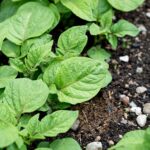We use cookies to make your experience better. To comply with the new e-Privacy directive, we need to ask for your consent to set the cookies. Learn more.
Blight Resistant Potatoes
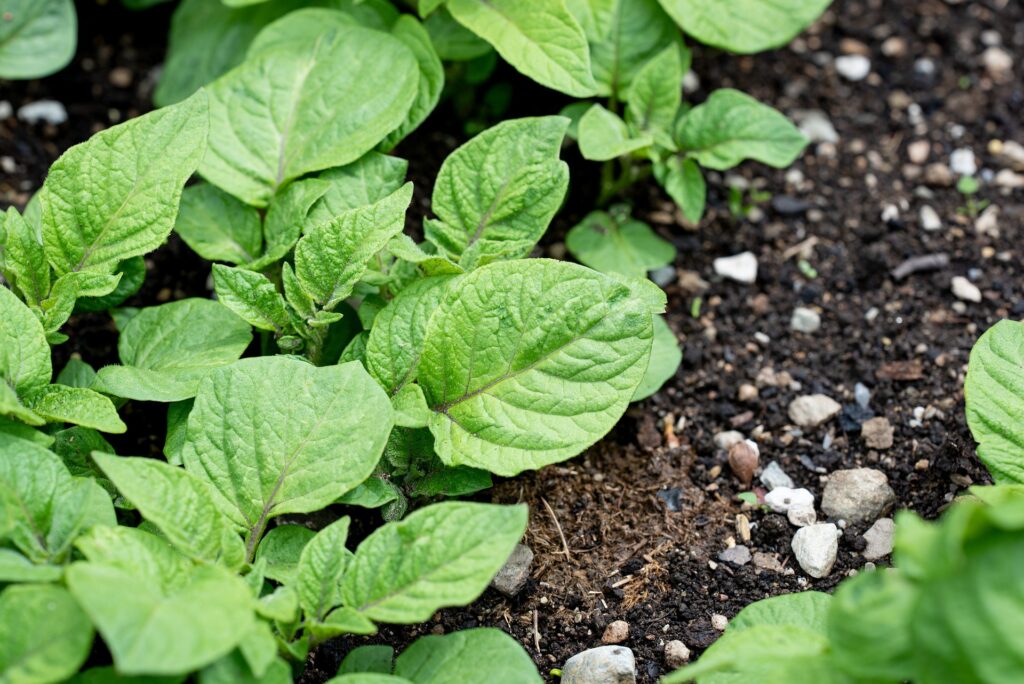
Blight Resistant Potatoes
Potato breeders have been labouring away in the background for decades to develop potato varieties that are great tasting, have good agronomic qualities and are highly blight resistant.
What Is Blight?
Blight is a fungal disease caused by spores of Phytophthora infestans, which are spread by the wind. Dark brown blotches appear around leaf tips and edges, spreading towards the middle, shriveling and rotting the leaf. The leaves and stems rapidly blacken and rot, and the plant collapses. More spores are released and these quickly spread to infect neighbouring plants. Spores are also washed into the soil where they can infect potato tubers causing a red-brown rot directly beneath the skin which slowly spreads towards the centre of the tuber. Heavy rain washes the fungal spores of late blight into the soil, where it overwinters.
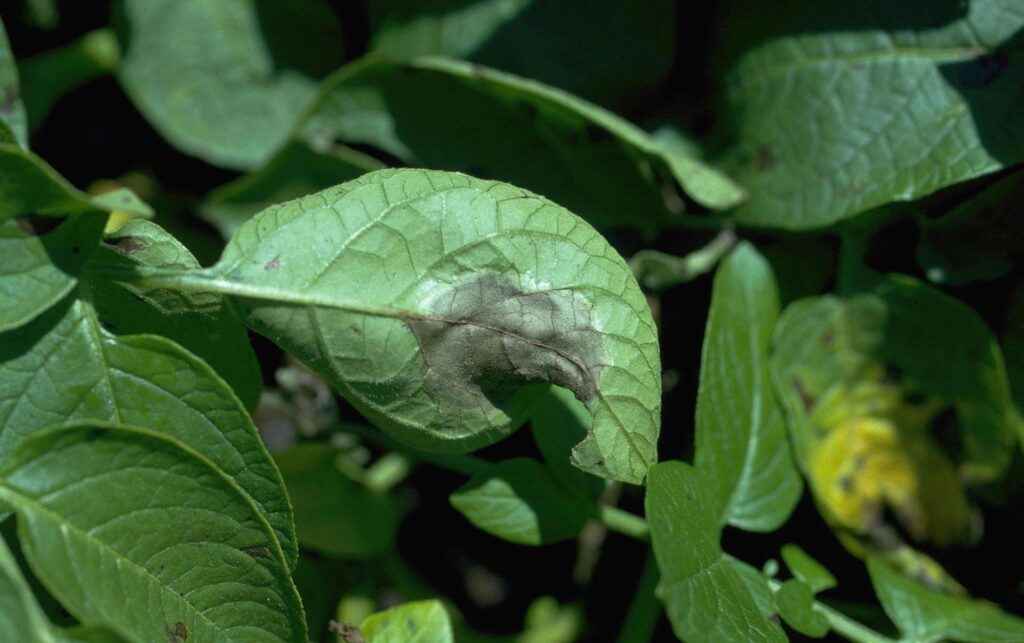
Why Are Potatoes So Susceptible To Blight?
Traditionally blight has been kept at bay by chemical control. Around €5 million is spent on fungicides in conventional farming annually to prevent blight in Ireland alone. This is dished out over 15-20 applications per season - a worrying amount. Unfortunately this historical dependence on fungicides has delayed breeding for genetic resistance. When it was discovered that plants could be protected by copper based and other fungicides, blight resistance was not considered a priority to breeders who were free to focus on other qualities. Negative selection for resistance occurred as happens with any inherited character which is not contributing to survival.
To make matters worse, late blight is not a single fixed organism, but rather exists in many different strains which can cross and evolve rapidly. It can complete its life cycle in just 5 days. This allows for speedy adaptation and in recent years has led to the creation of aggressive strains which are even resistant to fungicides. Furthermore, potatoes are nearly always propagated vegetatively meaning that the successive generations are genetically identical. This does not give them any chance to evolve resistance to the disease and has contributed to a great loss of the genetic diversity so important to breeding programmes. All in all, breeding new potato varieties is a very slow and unglamorous enterprise. Breeders generally have to cross plants with wild varieties to get resistant genes. The culinary qualities are unfortunately lost in the mix at this stage and it takes decades of breeding and testing to develop a potato which maintains the resistant genes and tastes decent
How Are Potatoes Bred To Be Blight Resistant?
Potato breeders cross existing varieties by taking the pollen from the flower of one potato and applying it to the stamen of another variety, keeping the potatoes isolated of course. They then harvest the ‘true seed’ from the potato berries. These seeds are sown in pots and multiplied for a year or two to see if the cross is worth keeping. Only 1 in 3000 crossings may be useful to continue with.
One of the first successes was the introgression of major resistance R genes to the cultivated potato from a wild Mexican species - Solanum demissum. The wild species had an interesting source of resistance genes for the potato. However soon after these varieties were introduced they lost resistance indicating poor durability.
Breeders now aim for a more durable level of resistance by stacking an optimal combination of R genes rather than relying on just one resistance gene. Potato breeders have also become increasingly better at introgressing these genes and preserving the other attractive qualities, such as yield, taste and other disease resistances.
Rating Blight Resistance
Blight resistance is not a straightforward ‘is’ or ‘isn’t’ characteristic of a potato. It is a spectrum typically rated on a scale of 1-9. A range of genes and gene combinations are involved in conferring resistance and much of the genetic basis of resistance is not fully understood. In certain cases, particular resistant genes will only be effective against certain strains of blight. So if a variety had just one or two of these genes it could still be very prone to infection depending on which strain of blight is present in a given year. Potatoes with very high levels of blight resistance will have a selection of resistance giving genes. These are described as having a broad resistance and are far more robust. New blight resistant varieties have multiple resistant genes ‘stacked’ into them rather than relying on single genes.
The ‘Next Generation’ Varieties
The largest contribution to the breeding and releasing of quality blight resistant varieties has come from Dutch company Agrico, who have developed a range dubbed ‘next generation’ potatoes. All have high resistance to blight - scoring 8’s and 9’s for foliage and tuber blight. A couple of these have been grown in Ireland for a number of years with great results.
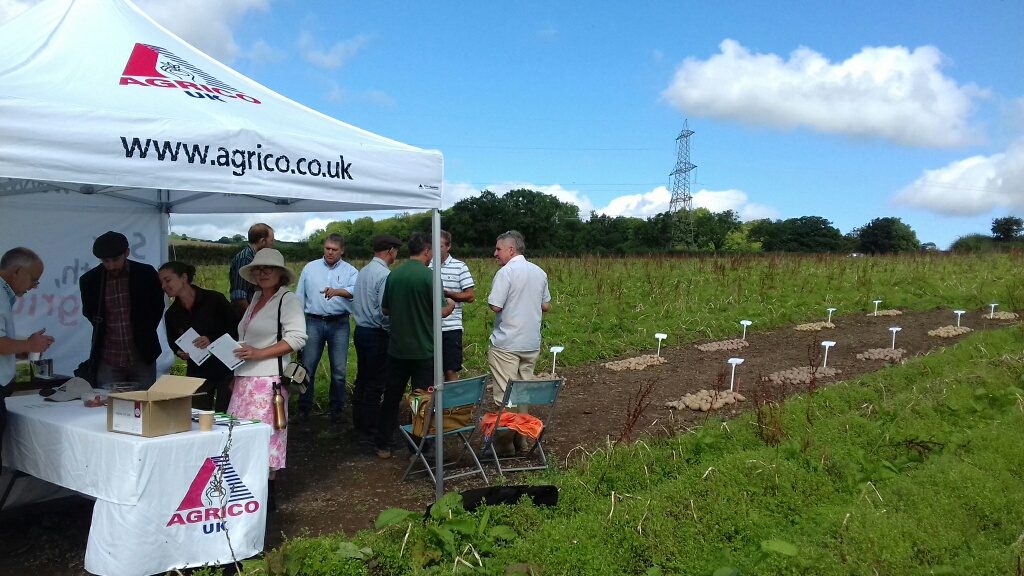
Blight Resistant Varieties
Vitabella (bred by Plantera) is an oval potato with yellow skin and flesh, classified as an early/second early firm variety. This potato is a standout choice for organic cultivation, renowned for its attractive appearance and delightful flavour. What sets Vitabella apart is its excellent blight resistance, providing growers with a robust and reliable option. Having demonstrated exceptional performance in 2018 and 2019, both growers and consumers expressed satisfaction, paving the way for its potential status as a mainstay in organic production. Its firm texture makes it superb for boiling, roasting, and chips. Vitabella boasts great storage characteristics, ensuring a lasting supply of this flavourful and versatile potato. It is important that Vitabella is not planted too deep as the tubers go deep down in the drill. They will not break out of the sides.
New Nola (bred by Den Hartigh) is a fairly new but already proven variety with high resistance to both tuber and foliar blight. It is popular with growers in Holland and Sweden. Its appeal lies in its impressive disease resistance, exceptional eating quality, high yield, and excellent storability. This cooking type A potato boasts a firm, dark yellow, oval shape, making it a versatile choice suitable for both second early and maincrop cultivation. Nola excels not only in taste and texture, proven as a favourite in trials at Fruit Hill Farm, but also in adaptability, thriving on saline soils in the North of Holland. This variety also demonstrates resistance to wart disease and a medium-high resistance to scab, further enhancing its robustness. With a very high storability and long shelf life, Nola is a reliable choice for those seeking a productive and resilient potato.
Alouette (bred by Agrico) is a second early/early maincrop that yields large attractive red skinned oval tubers with yellow flesh. Alouette is a very good cropper with the highest possible ratings for both leaf and tuber blight resistance, making it a resilient choice for growers. This variety exhibits rapid early foliage development, providing complete canopy cover that effectively suppresses weeds. Alouette is a versatile, firm all-round/salad potato with a pleasing flavour, suitable for boiling, steaming, roasting, baking, and chipping.
Levante (bred by Agrico) is a yellow-skinned early maincrop potato, well suited for organic production. Levante showcases excellent late blight resistance and robust virus resistance, making it a resilient choice for growers. Stress-tolerant and thriving in challenging conditions, Levante produces large numbers of oval tubers with smooth skins and light yellow flesh. Floury potato with high dry matter content, suitable for boiling, mashing, and baking. An attractive potato with excellent retail potential.
Connect (bred by Den Hartigh)is a highly blight resistant, scab resistant, bruise resitant light yellow oval maincrop. It is becoming a main variety in organic production due to its disease resistance, eating quality, high yield and robustness. With its light yellow oval tubers, matching flesh, and shallow eyes, Connect not only appeals visually but also delivers an great taste and texture. Notably, it excels in maintaining high dry matter content and exhibits a remarkable resistance to harvest damage, making it a resilient and favored choice for those seeking quality and durability in their potato crop. Suitable for roasting, mashing and boiling.
Axona (bred by the Sárvári family in Hungary) is related to Sarpo Mira but with even better characteristics that make it easier to grow, easier to cook and with a superb taste. Axona is a pink skinned main crop potato that is winning critical acclaim wherever it is grown and eaten. Its great blight and disease resistance, coupled with its weed smothering foliage and natural dormancy makes it ideal for the GIY enthusiast or beginner. The potato plants come up and fill the available space with stunning dark green foliage, the plants develop eye stopping pink flowers and are untroubled by Potato Blight and other diseases such as virus’ and silver scurf.
New Oscar (bred by Plantera) is an organic early maincrop potato variety celebrated for its round, yellow tubers. Boasting high yields and exceptional resistance to late blight in both foliage and tubers, Oscar is a reliable choice for growers. Its versatility shines through in the kitchen, as it offers good taste and cooking qualities (AB/B). Suitable for boiling, roasting, and chipping, Oscar proves to be an all-rounder in culinary applications. Notably, this variety eliminates the need for chitting, simplifying the cultivation process. Oscar adapts well to various soil types and is recognized for its resilience against the Y-Virus.
New Vitanoire (bred by Plantera) is a novel early purple-fleshed potato variety derived from a cross with the highly regarded blight-resistant Vitabella. Vitanoire offers not only a beautiful internal color but also a delightful flavour. Vitanoire has oval, average-sized tubers.
Sevilla (bred by Niek Vos) is a light skinned yellow fleshed blight resistant maincrop potato. Sevilla have low nutrient requirements making them ideal for low input production. Their resilience extends beyond blight resistance; Sevilla is stress and drought-tolerant and showcases vigorous foliage growth that effectively suppresses weeds. Sevilla has an excellent all round potato with high dry matter/floury. Excellent for Chipping.
Carolus (bred by Agrico) has become a very popular early maincrop variety. It is high yielding with great flavour and texture. With a high dry matter content, it is floury enough to appease the traditional Irish palette. Some growers, particularly on lighter soils, have problems with scab caused by dry conditions. It also sets tubers shallowly meaning they can burst out of the drill if not well earthed up. They need to be harvested gently, especially when grown to full maturity, as the high dry matter makes it easier to get inner bruising.
Note: Unfortunately the Carolus harvests failed so we will not have them for 2024.
Sarpo Mira (bred by the Sárvári family in Hungary) is the original Sarpo potato and still the most widely known. With 40 years plus heritage, Sarpo Mira variety has the highest resistance to late potato blight (some say the highest overall of any variety). Sarpo Mira is a large, pink skinned main crop potato. It has an oval shape and yellow flesh. Sarpo Mira develops to produce a deep rooted (and thus drought tolerant) plant that grows very tall and smothers any weed competition. Give a very high yield. Conventional untreated seed.
Kelly is a recently developed blight-resistant maincrop potato that stands out for its exceptional floury texture. his variety stands out as an excellent chipping option, maintaining its high dry matter content and frying quality even during prolonged storage. 'Kelly' has high resistance to both foliage and tuber blight. The crop yields large tubers with a distinctive long oval shape and shallow eyes, contributing to its visual appeal. It's important to note that while 'Kelly' excels in many aspects, it exhibits low resistance to scab. Conventional untreated seed.
New Agostino (bred by Agrico) is a recently introduced potato variety in Ireland, it presents a promising option for growers seeking a red-skinned early maincrop. It is a good substitute for 'Setanta' as it is very floury with good flavour. Agostino has good resistance to late blight in both foliage and tubers. Forms large tubers with good tuberisation. Conventional untreated seed.
Don’t Forget to Nurture
Of course genetics also have to express themselves in the environment they are placed in and the usual factors for achieving a successful crop need attention. Plants suffering from nutrient deficiencies will always be more susceptible to disease and it's no different with potatoes and blight. Varieties vary widely on their nutrient demands and it's crucial to consider this when planting. Irrigation has become an issue in recent years with the unthinkable notion of watering outdoor crops becoming a reality.
Finally the particularities of your soil (known & unknown) will impact the resulting crop greatly. It can affect your yield, be the difference between getting scab or not, and influence flavour greatly. It’s a good idea to trial a few varieties to see how they perform. A soil test might also be beneficial if you are growing on a larger scale.
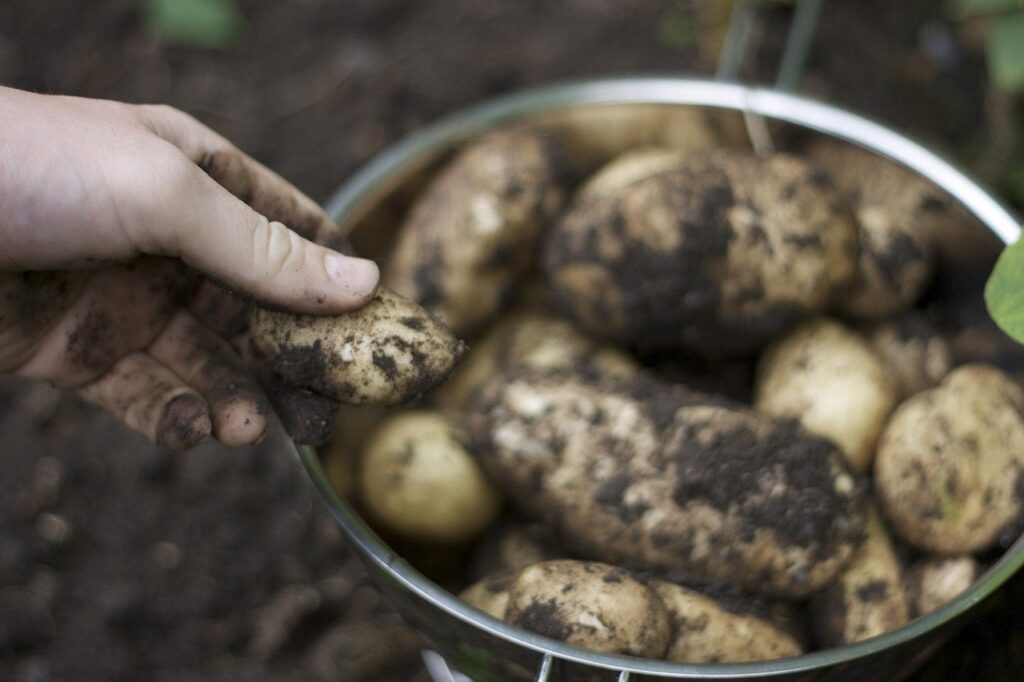
Check out our full range of seed potatoes here.
Updated: 7th February 2024

